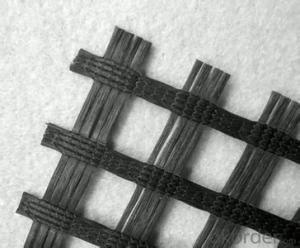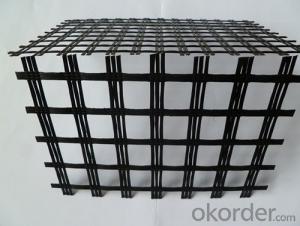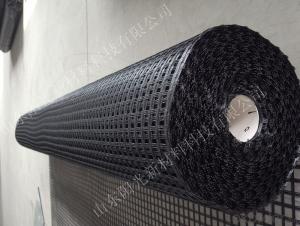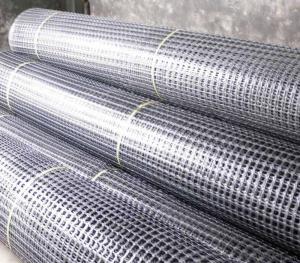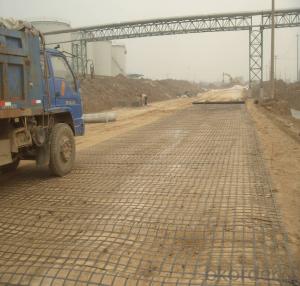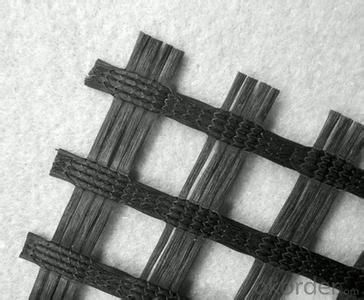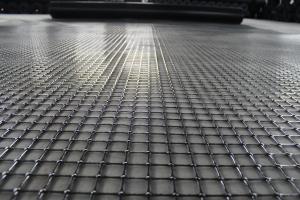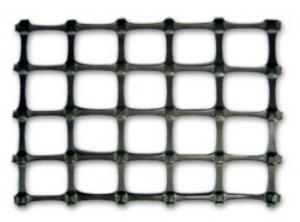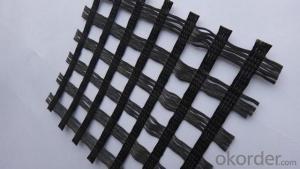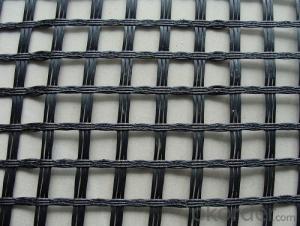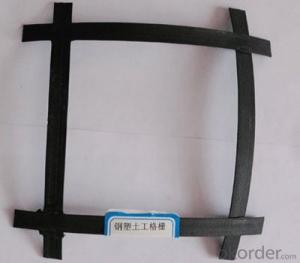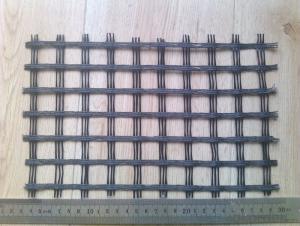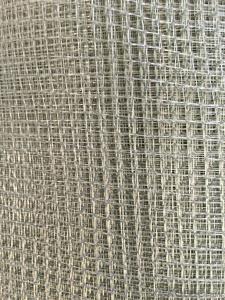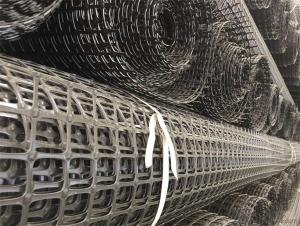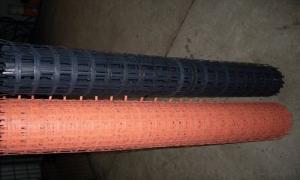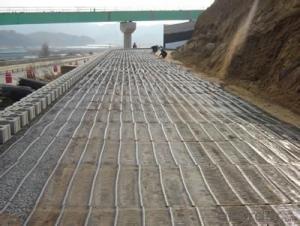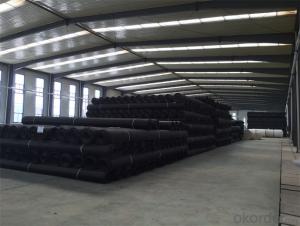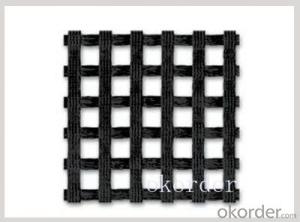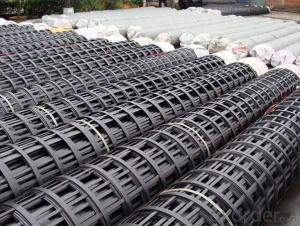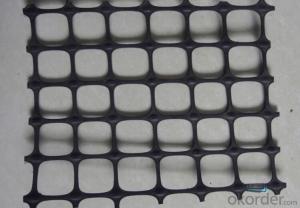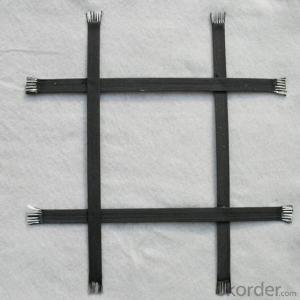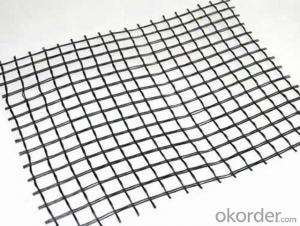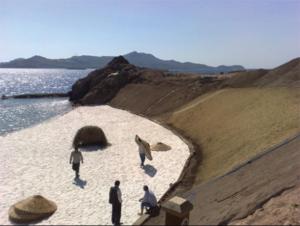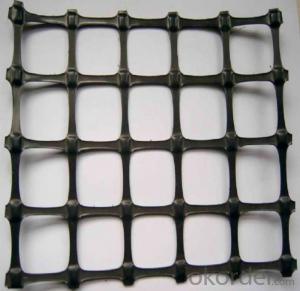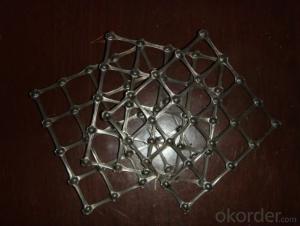Tenax TT Geogrids for Construction and Road Reinforcement
- Loading Port:
- Qingdao
- Payment Terms:
- TT OR LC
- Min Order Qty:
- 5000 m²
- Supply Capability:
- 100000 m²/month
OKorder Service Pledge
OKorder Financial Service
You Might Also Like
Fiberglass Geogrid Introduction
Fiberglass geogrid is a kind of new favorable earthwork base material to strengthen the road surface and roadbed. This product is made by weaving and covering fiberglass filament. It is featured by high vertical and horizontal tensile strength, low unit extension, high flexibility, and favorable high and low temperature resistance. The products after surface covering own the favorable property of alkali resistance and aging resistance
Fiberglass Geogrid Features :
1. Fiberglass geogrid for soil reinforcement
2. Pavement subgrade stabilization
3. Area /Ground stabilization
4. Pavement base reinforcement
5. Working & load transfer platforms
6. Rail Track-bed stabilization
7. Reinforced granular foundation beds
PROPERTIES
1. High tensile strength in both the warp and weft directions;
2. Low elongation;
3. Excellent temperature range;
4. Good anti-age and alkali-resistance;
5. Reduce construction cost, extend service life of road and prevent deflection cracks.
Fiberglass Geogrid Specification:
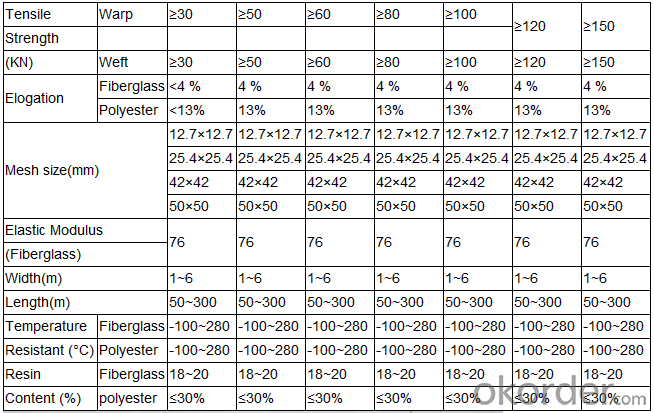
FAQ:
Q: What kind of payments does jenor support?
A: T/T, L/C, Cash are accepted.
Q: Do you charge for the samples?
A: Accordeing to our company policy, the samples are freee, we only charge the freight fee. And we will return the freight fee during the next order.
Q: Can you produce according to customers' design?
A: Sure, we are professional manufacturer, OEM and ODM are both welcome.
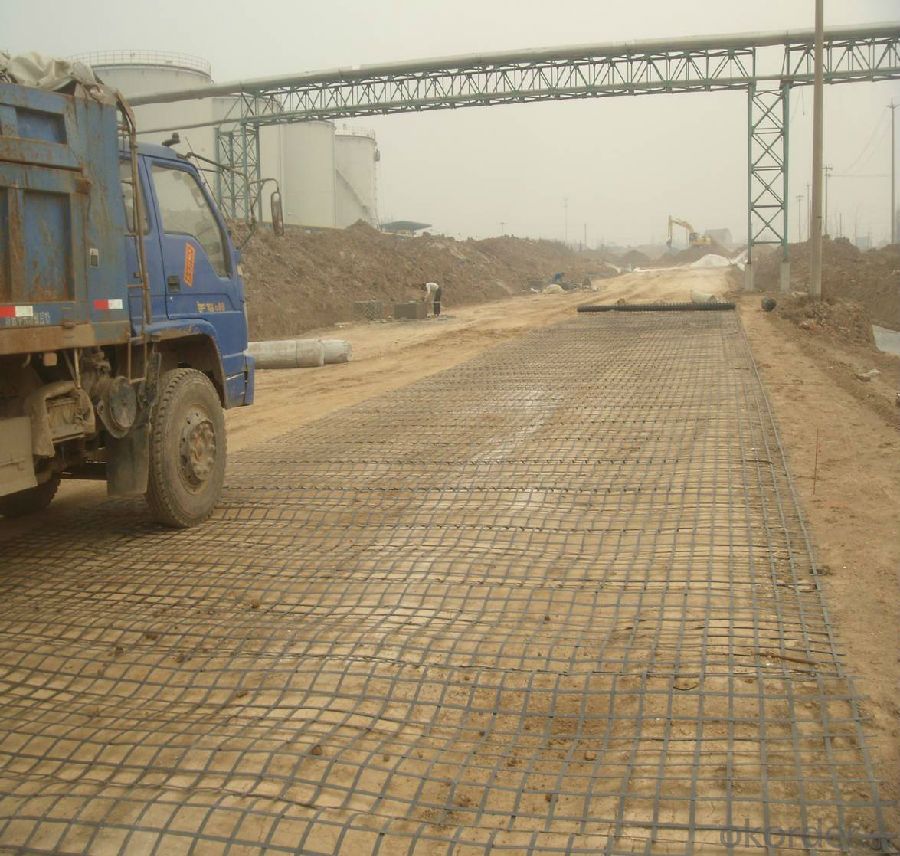
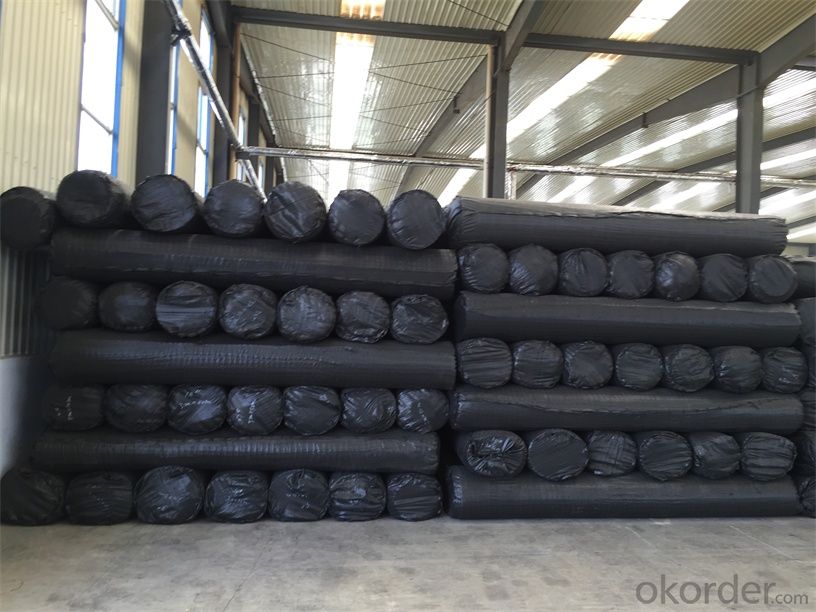
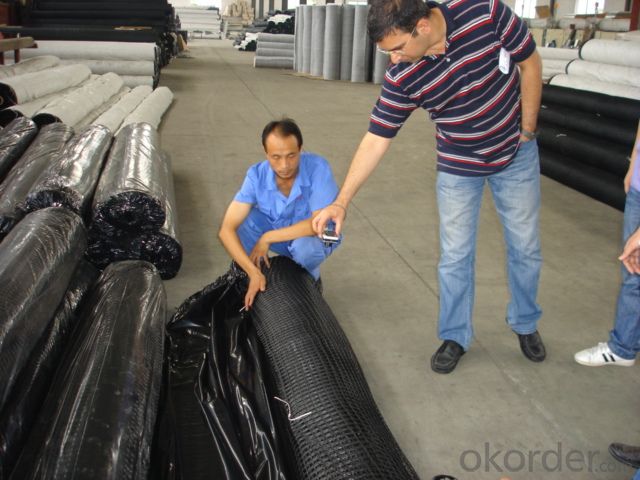
- Q: Can geogrids be used in environmental containment systems?
- Yes, geogrids can be used in environmental containment systems. Geogrids are commonly used to reinforce and stabilize earth structures such as slopes and retaining walls. In environmental containment systems, geogrids can be utilized to enhance the stability and strength of liners and barriers, preventing soil erosion and providing long-term durability. They can also improve the overall performance of containment systems by increasing their load-bearing capacity and reducing the potential for geotechnical failures.
- Q: What is the action mechanism of OKorder geogrid
- After surface modification and coating treatment, the surface properties of the glass fiber were changed, and the composite performance of the fiber was improved. Glass fiber geogrid has the above characteristics, it can play an important role in the following aspects.
- Q: Can geogrids be used in reinforcement of geosynthetic clay liners?
- Yes, geogrids can be used in the reinforcement of geosynthetic clay liners. Geogrids are commonly used to enhance the tensile strength and stability of geosynthetic clay liners, thereby improving their performance in various applications such as landfill liners, pond liners, and slope stabilization. The geogrids are typically placed between layers of geosynthetic clay liners to provide additional reinforcement and prevent potential failure modes such as lateral sliding and slope instability.
- Q: What are the limitations of geogrids?
- Geogrids have a few limitations. Firstly, they are not suitable for all types of soil and terrain conditions. They are most effective in soils with good particle interlock and cohesion. Secondly, geogrids are not effective in situations where there is high water flow or erosion potential as they do not provide sufficient protection against these forces. Additionally, geogrids may have limited strength in certain applications, such as heavy load-bearing scenarios, and may require additional reinforcement. Lastly, the installation and maintenance of geogrids can be complex and costly, requiring skilled labor and regular inspections to ensure proper functioning.
- Q: Are there any specific maintenance requirements for geogrids?
- Yes, geogrids typically require regular inspection to ensure proper functioning and longevity. This may include checking for damage or deterioration, removing any debris or vegetation, and ensuring proper alignment and tension. Additionally, geogrids should be protected from excessive UV exposure and harsh environmental conditions to maintain their effectiveness.
- Q: Are there any specific requirements for geogrid installation in road construction?
- Yes, there are specific requirements for geogrid installation in road construction. These requirements include proper site preparation, ensuring the geogrid is laid flat and taut, adequate overlap and anchoring, and proper compaction of the surrounding soil. Additionally, the geogrid should be installed according to the manufacturer's guidelines and in compliance with relevant industry standards and specifications.
- Q: What is the difference between Geogrid and geogrid
- A series of three dimensional mesh or a three-dimensional grid screen with a certain height, which is made of thermoplastic polymers, such as vinyl chloride, is used as a civil engineering. Engineering applications: highway, railway, bridge, road, pier, dam, slag field, such as soft soil foundation reinforcement, retaining wall and pavement crack resistance engineering and other fields. Glass fiber mesh used in exterior wall, interior wall paint, mainly to prevent cracking, different materials at the junction of mortar plastering material hollowing. Local node reinforcement will also be used
- Q: How do geogrids improve the stability of embankments?
- Geogrids improve the stability of embankments by providing reinforcement and increased load-bearing capacity. They are placed within the soil layers of the embankment, creating a strong interlocking structure that prevents soil movement and sliding. This reinforcement helps to distribute the loads evenly, reducing potential settlement and improving overall stability. Additionally, geogrids provide resistance against lateral spreading and erosion, enhancing the long-term performance and durability of the embankment.
- Q: How do geogrids improve the stability of shorelines?
- Geogrids improve the stability of shorelines by providing reinforcement and preventing soil erosion. They are typically installed beneath the surface of the shoreline, creating a strong and stable foundation. Geogrids help distribute the load of the soil and wave forces, reducing the risk of slope failure or collapse. Additionally, they enhance the soil's resistance to erosion caused by waves, currents, or wind, ultimately preserving the shoreline's integrity and preventing further degradation.
- Q: How do geogrids help in reducing the need for excavation and grading?
- Geogrids help in reducing the need for excavation and grading by providing structural support and reinforcement to the soil. They distribute the load more evenly, preventing soil movement and settling. This reduces the need for extensive excavation and grading, as the geogrids help stabilize the soil, allowing for the construction of roads, slopes, and retaining walls with minimal earthwork.
Send your message to us
Tenax TT Geogrids for Construction and Road Reinforcement
- Loading Port:
- Qingdao
- Payment Terms:
- TT OR LC
- Min Order Qty:
- 5000 m²
- Supply Capability:
- 100000 m²/month
OKorder Service Pledge
OKorder Financial Service
Similar products
Hot products
Hot Searches
Related keywords
